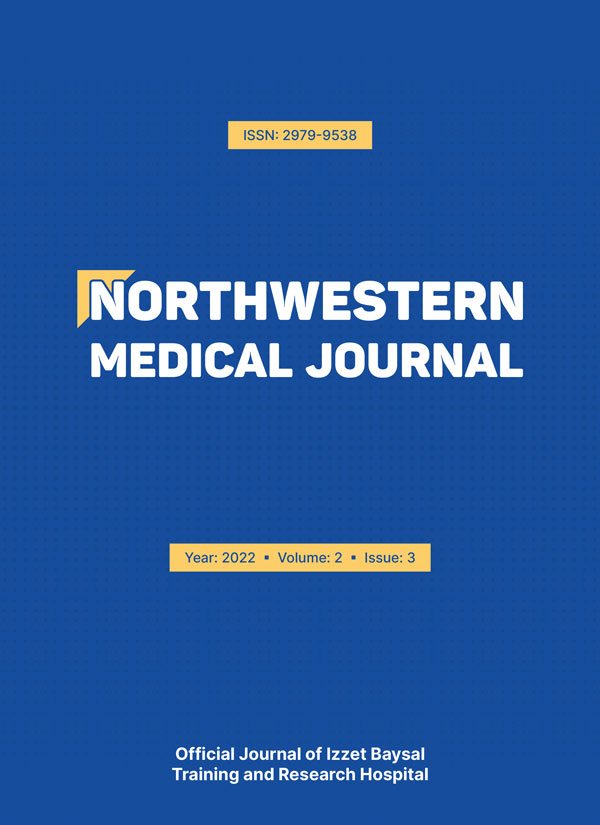Abstract
Aim: This study aimed to evaluate the postoperative bleeding status of the patients who underwent tonsillectomy over 18 years old. It evaluated the reasons for tonsillectomy, additional diseases, and the season in which tonsillectomy was performed.
Methods: One hundred and fifty patients aged 18 years and over who underwent tonsillectomy in the ear, nose, and throat clinic of a tertiary hospital were included in our study. The age, gender, additional disease, post-tonsillectomy haemorrhage (Post-TH), and the season in which tonsillectomy was performed were examined.
Results: A total of 150 patients, 50 females (33.3%) and 100 males (66.7%), were included in our study. The mean age of the patients was 32,49±12,20 years. Bleeding was observed in the postoperative period in 12 patients (8%), except for the first 24 hours postoperatively. It was determined that the most frequent complaint of bleeding in the postoperative period was on the 4th day. It was observed that 15 (10%) patients had an additional disease. A total of 35 (23.3%) patients underwent tonsillectomy due to Obstructive Sleep Apnea Syndrome (OSAS) and 115 (76.7%) patients for recurrent tonsillitis. Tonsillectomy was performed in the spring season for 31 patients (20.7%), winter for 40 patients (26.7%), autumn for 39 patients (26%), and summer for 40 patients (26.7%). No statistical difference between seasonal differences and the tonsillectomies performed was found (p> 0.05). There was no statistical difference between tonsillectomy and the presence or absence of additional diseases (p> 0.05).
Conclusion: We concluded that the presence of comorbidity and seasonal differences did not affect Post-TH in adult tonsillectomy patients.
Keywords: Comorbidity, postoperative bleeding, seasons, tonsillectomy
Copyright and license
Copyright © 2022 The Author(s). This is an open-access article published by Bolu İzzet Baysal Training and Research Hospital under the terms of the Creative Commons Attribution License (CC BY) which permits unrestricted use, distribution, and reproduction in any medium or format, provided the original work is properly cited.











